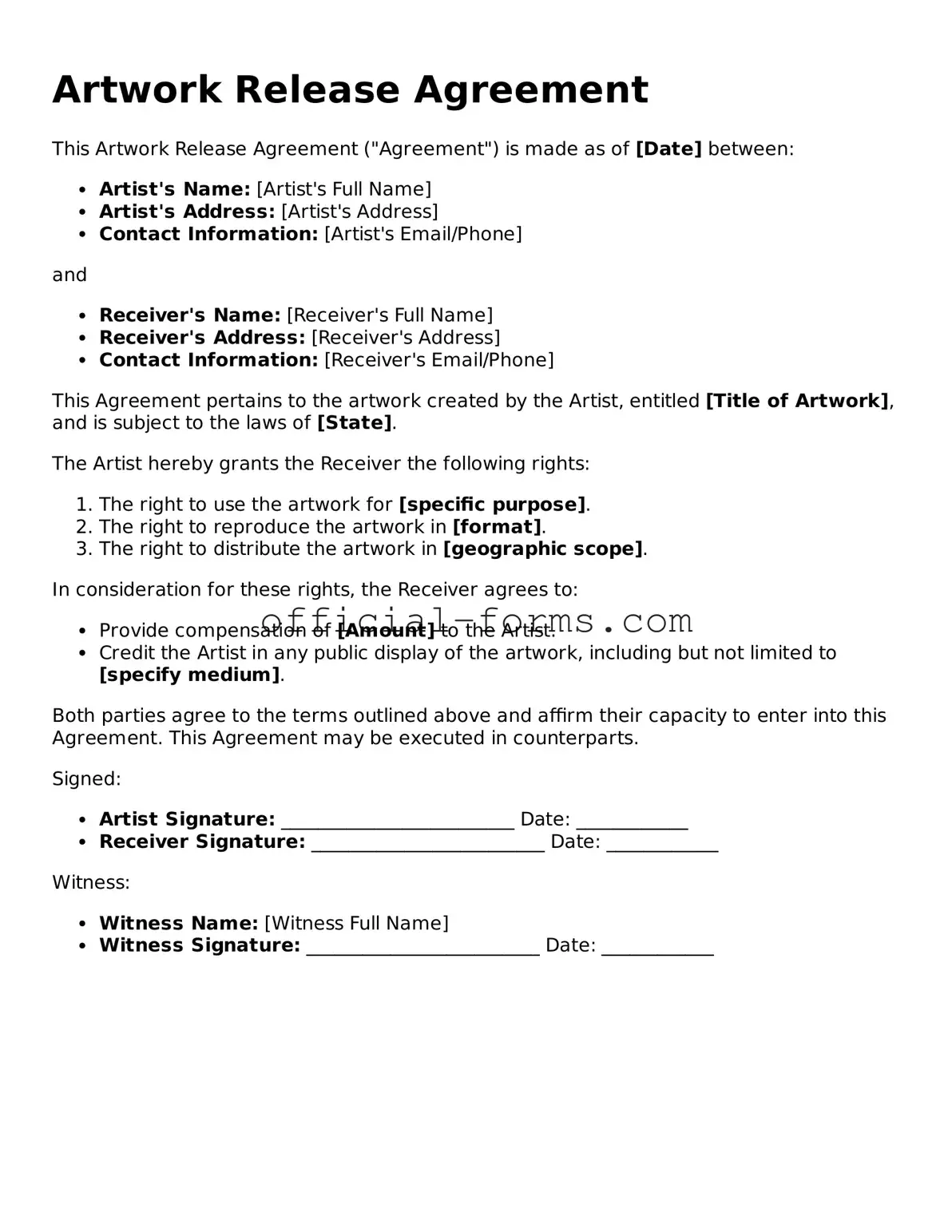The Artwork Release form serves as a crucial document in the realm of intellectual property, particularly for artists, photographers, and creators. This form not only establishes the rights and permissions associated with the use of artwork but also delineates the responsibilities of both the creator and the party seeking to use the artwork. By signing this form, the artist grants permission for their work to be reproduced, distributed, or displayed, while also retaining certain rights to their original creation. It typically includes essential elements such as the scope of usage, duration of the agreement, and any compensation terms, ensuring that both parties have a clear understanding of their rights and obligations. Furthermore, the form often addresses issues related to credit attribution, modifications, and the ability to revoke permissions under specific circumstances. Given the increasing prevalence of digital media and online sharing, the importance of having a well-crafted Artwork Release form cannot be overstated; it protects the interests of artists while facilitating the lawful use of their creative expressions.
